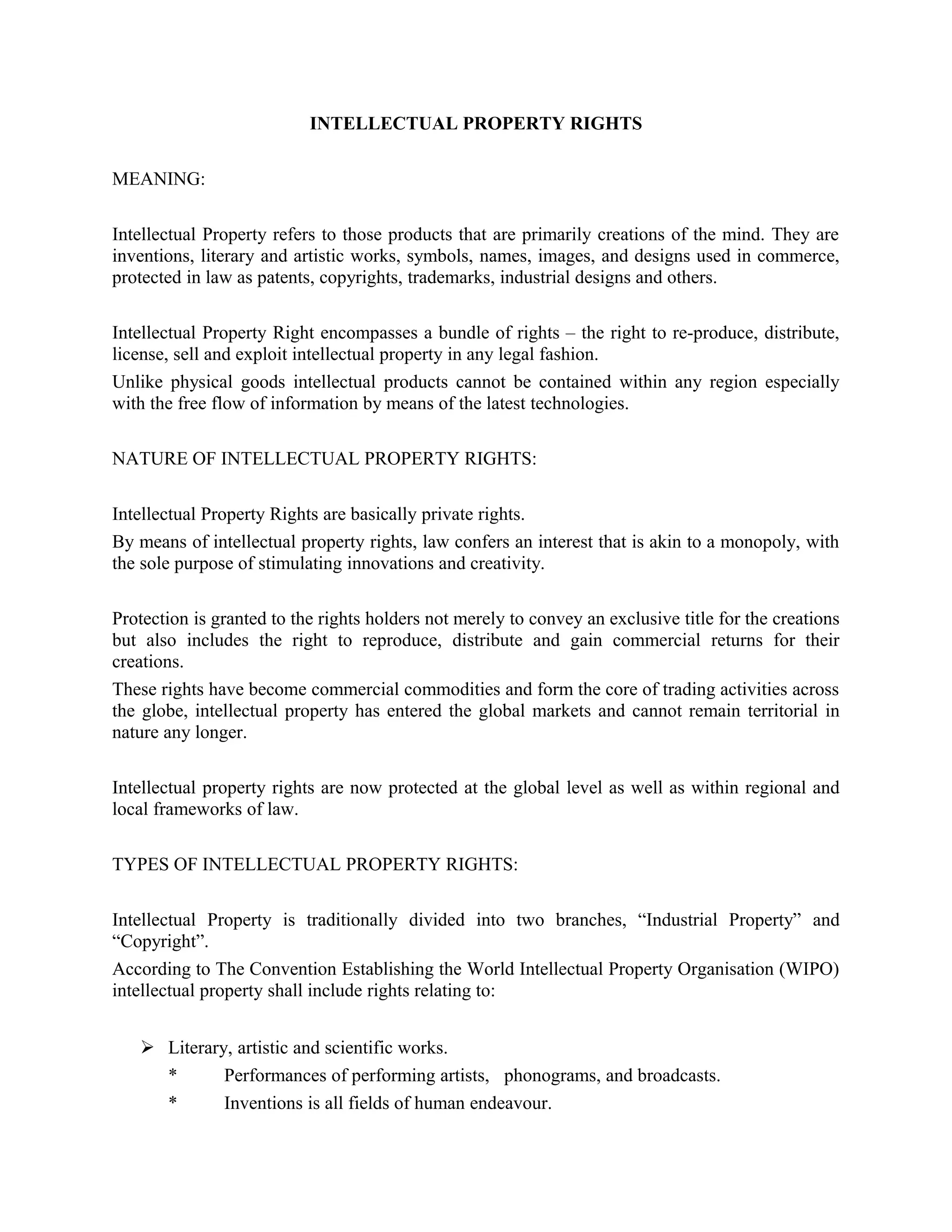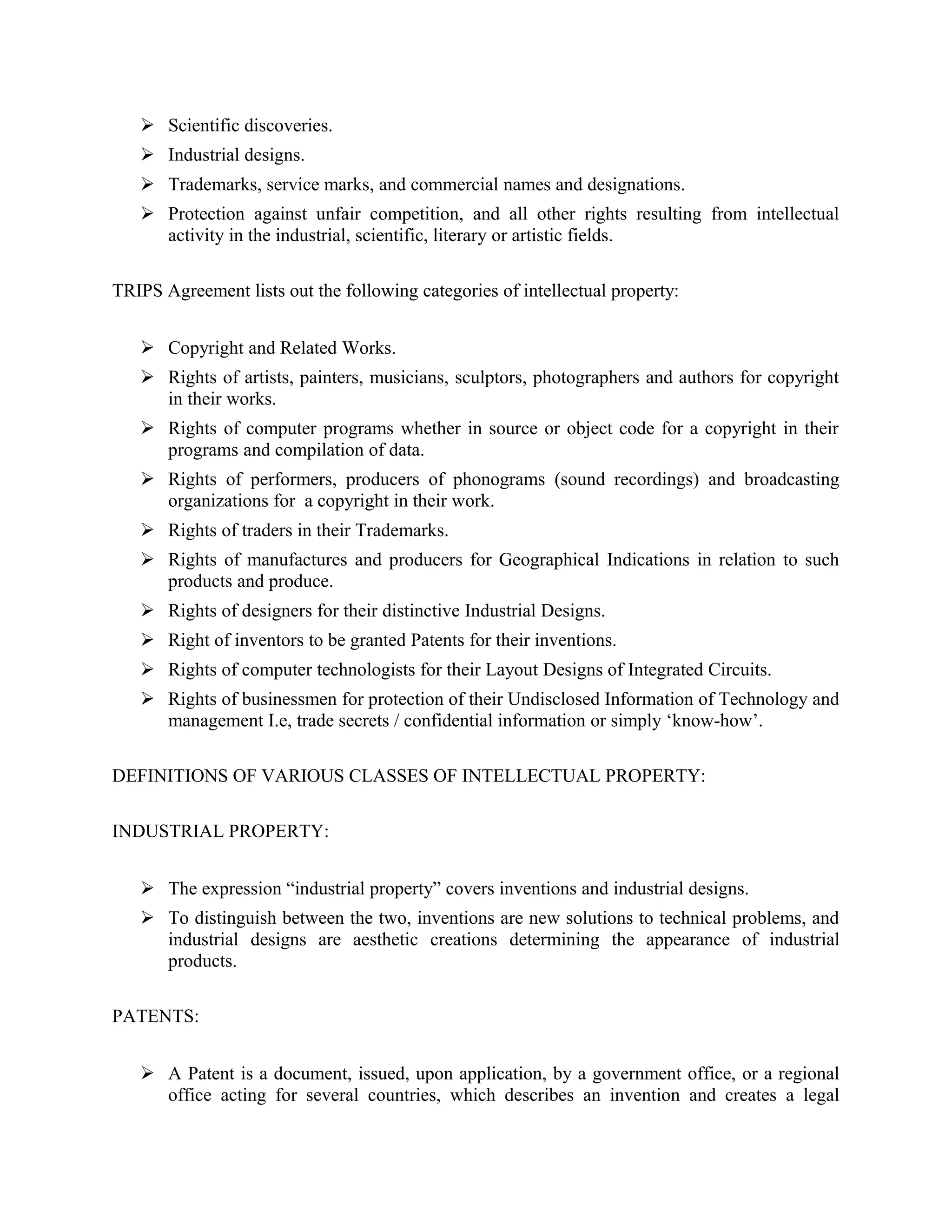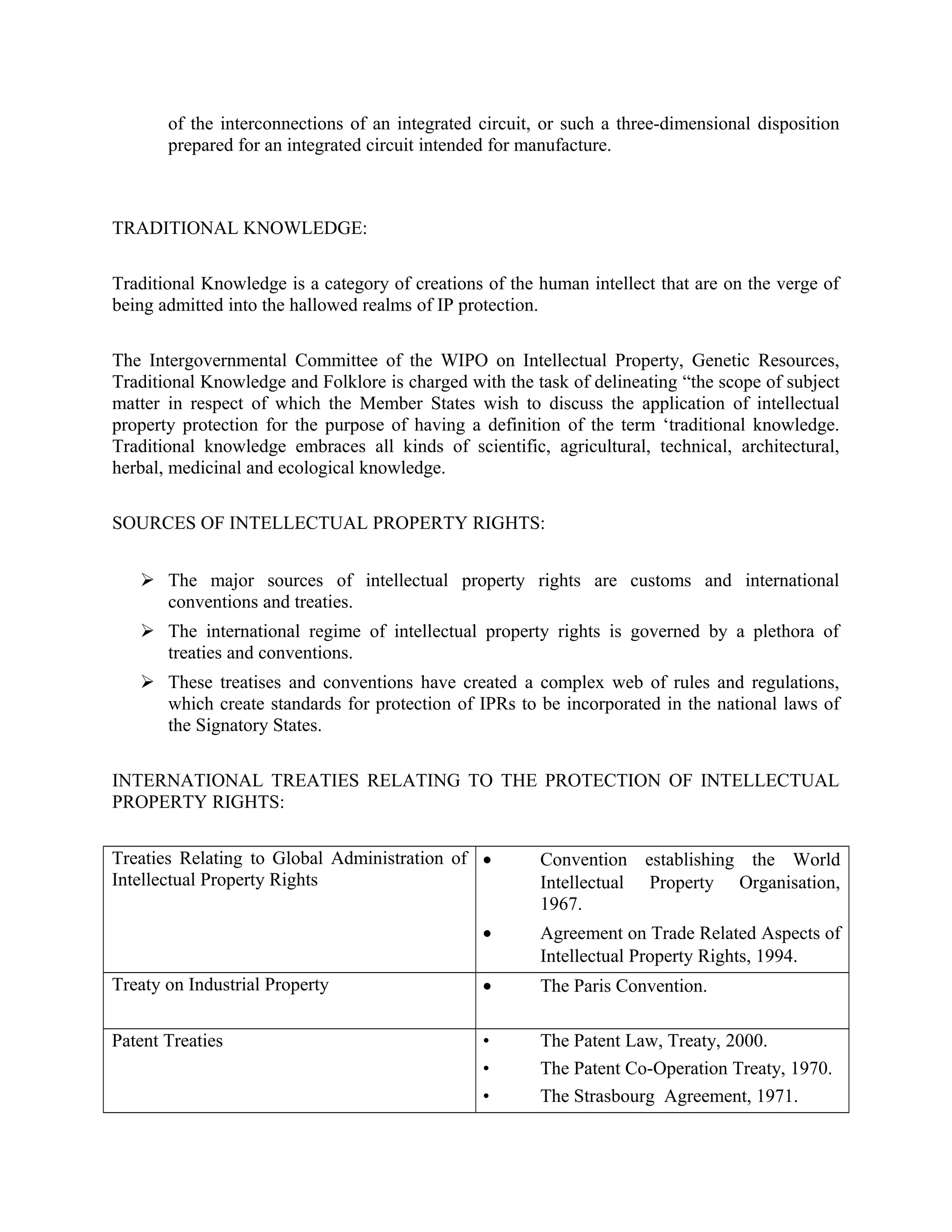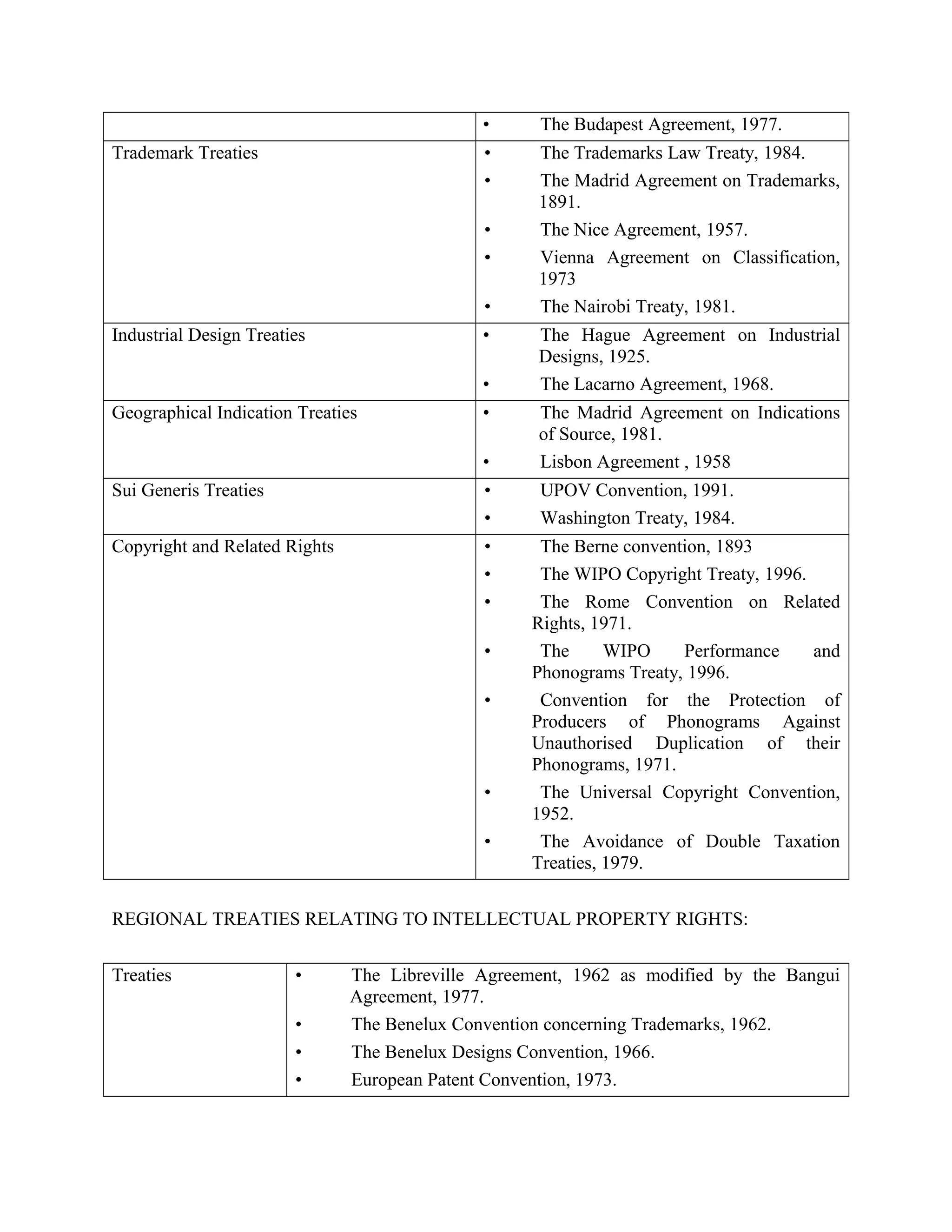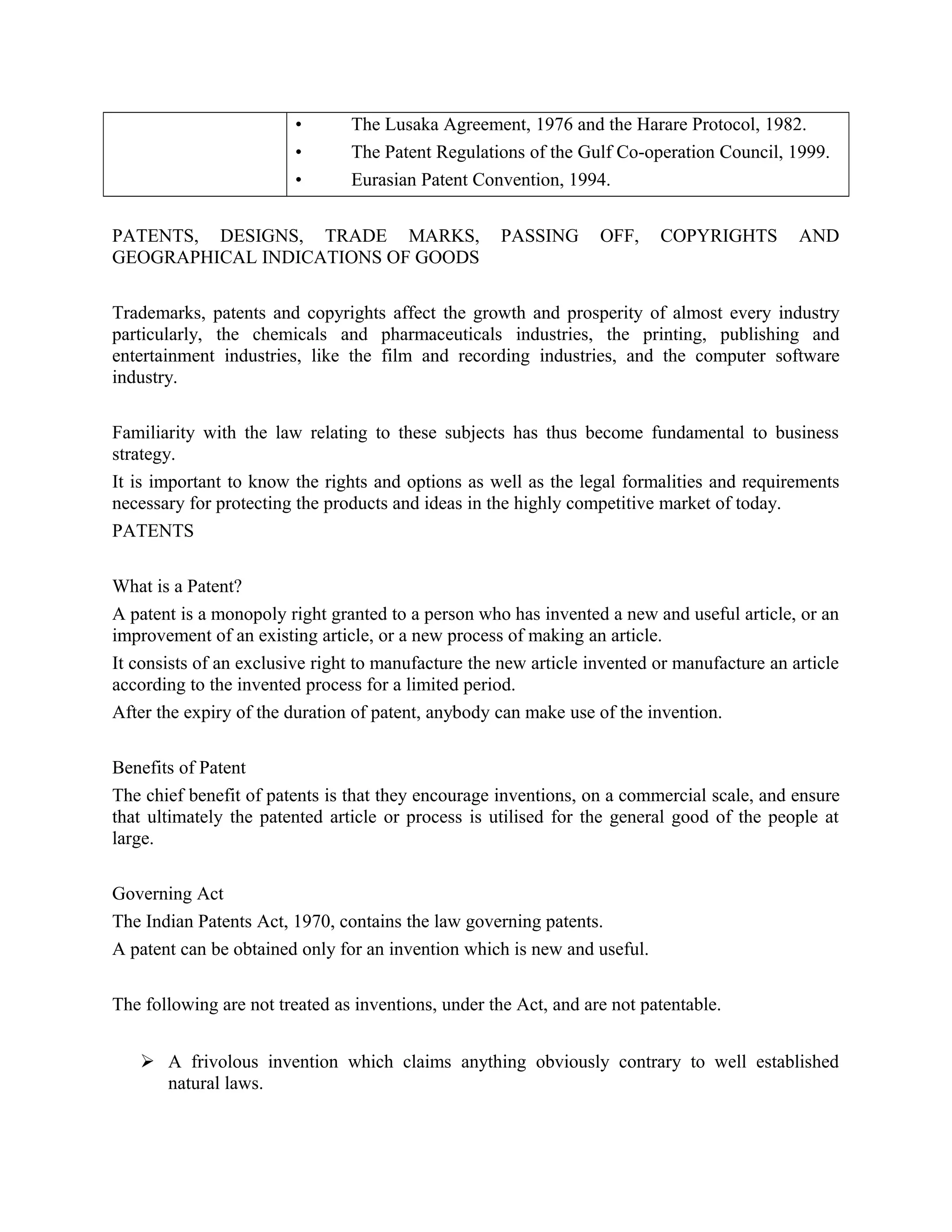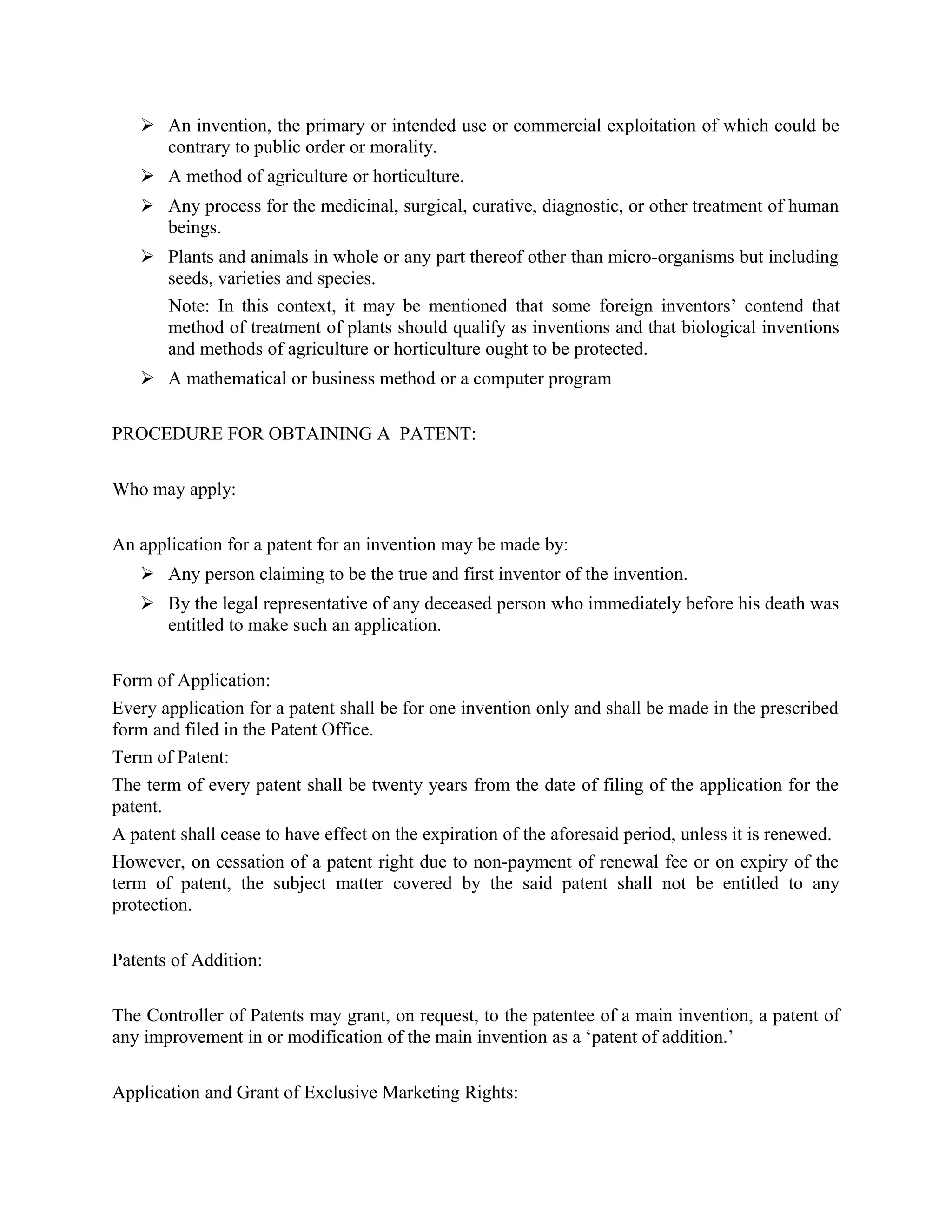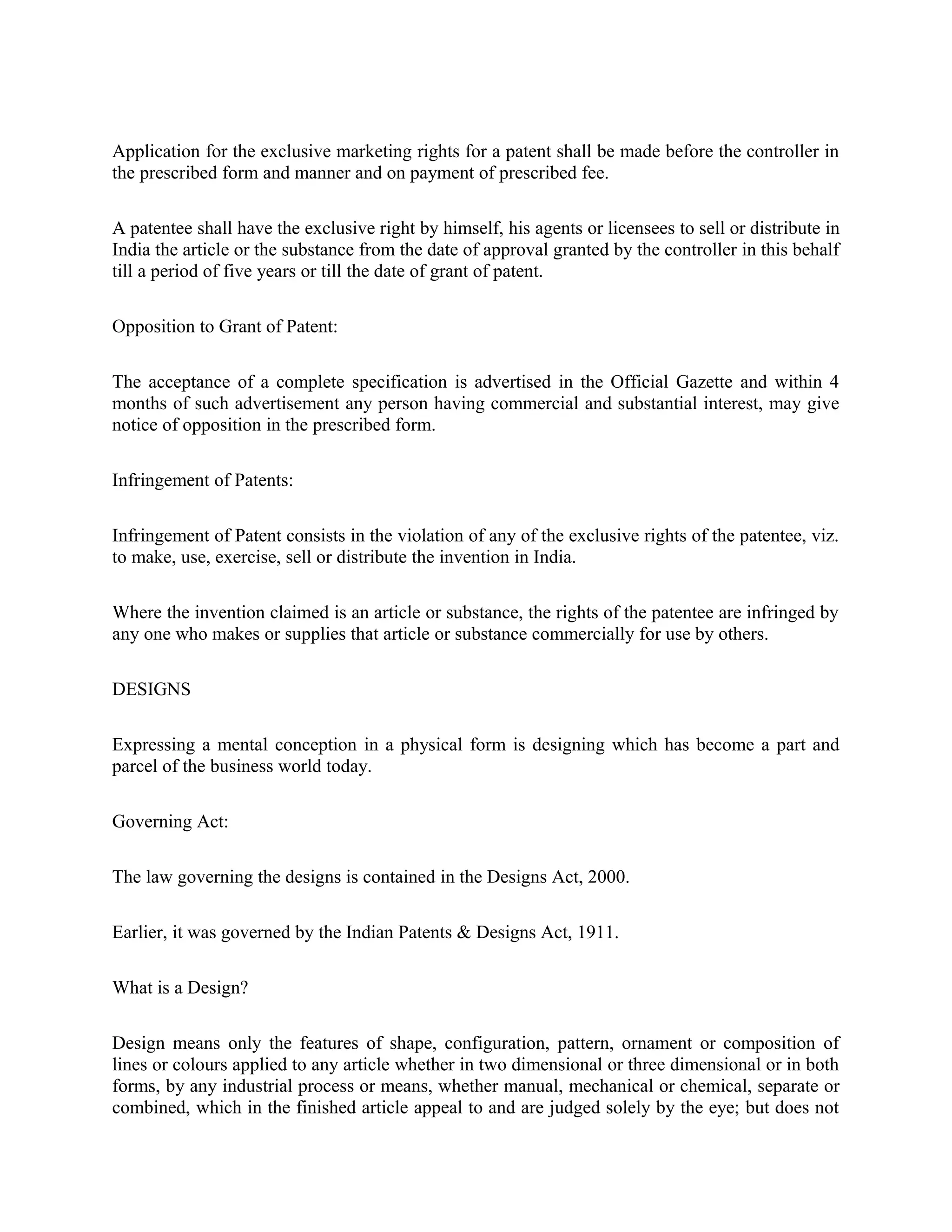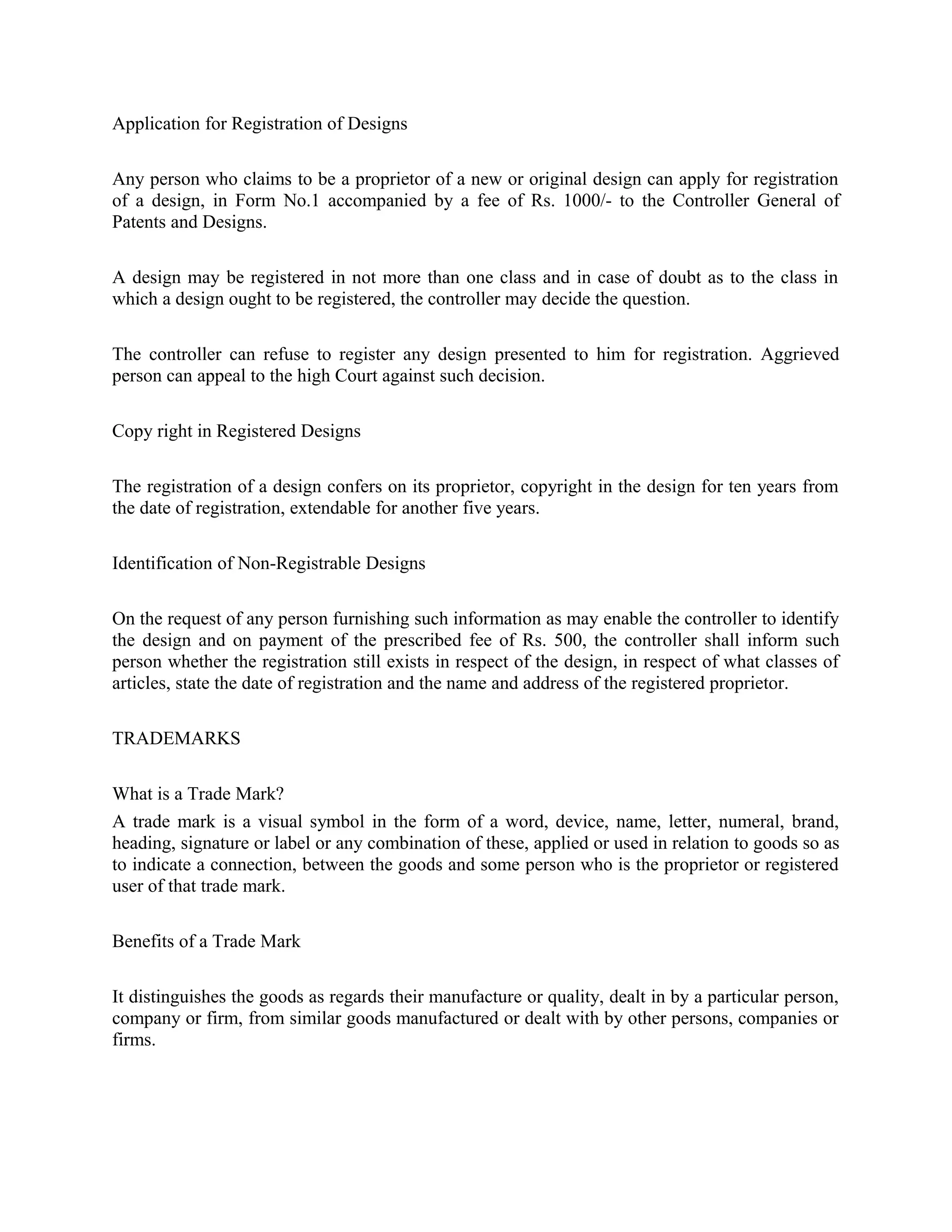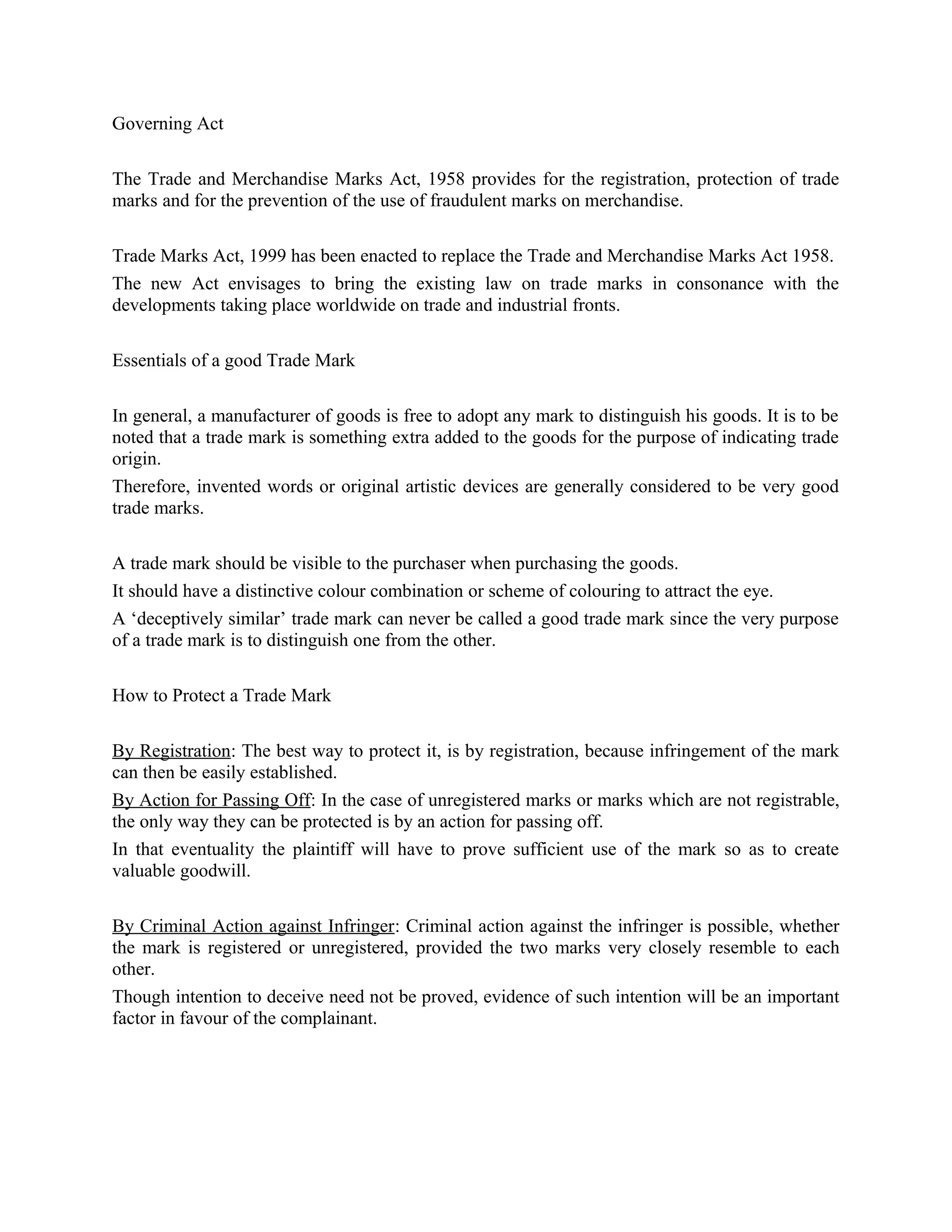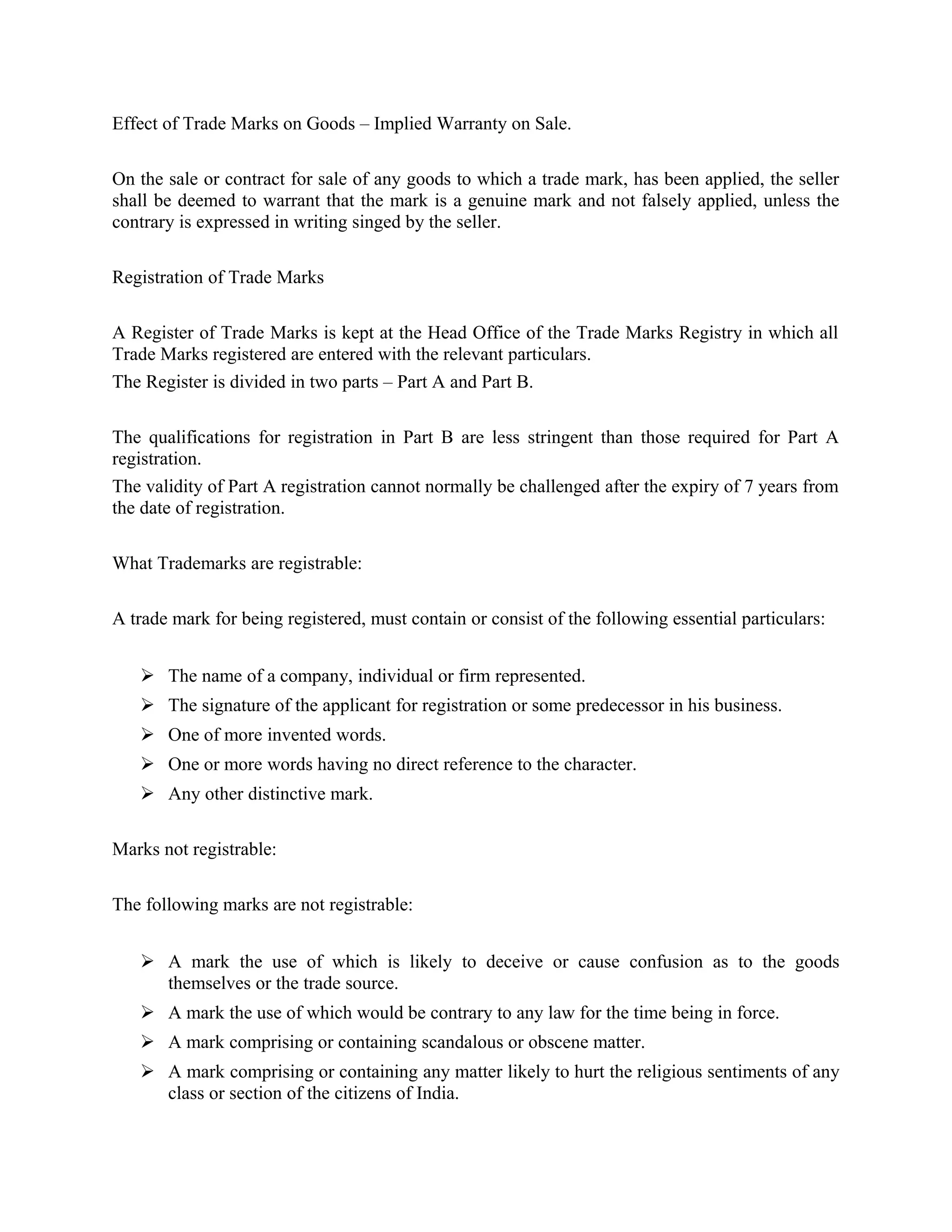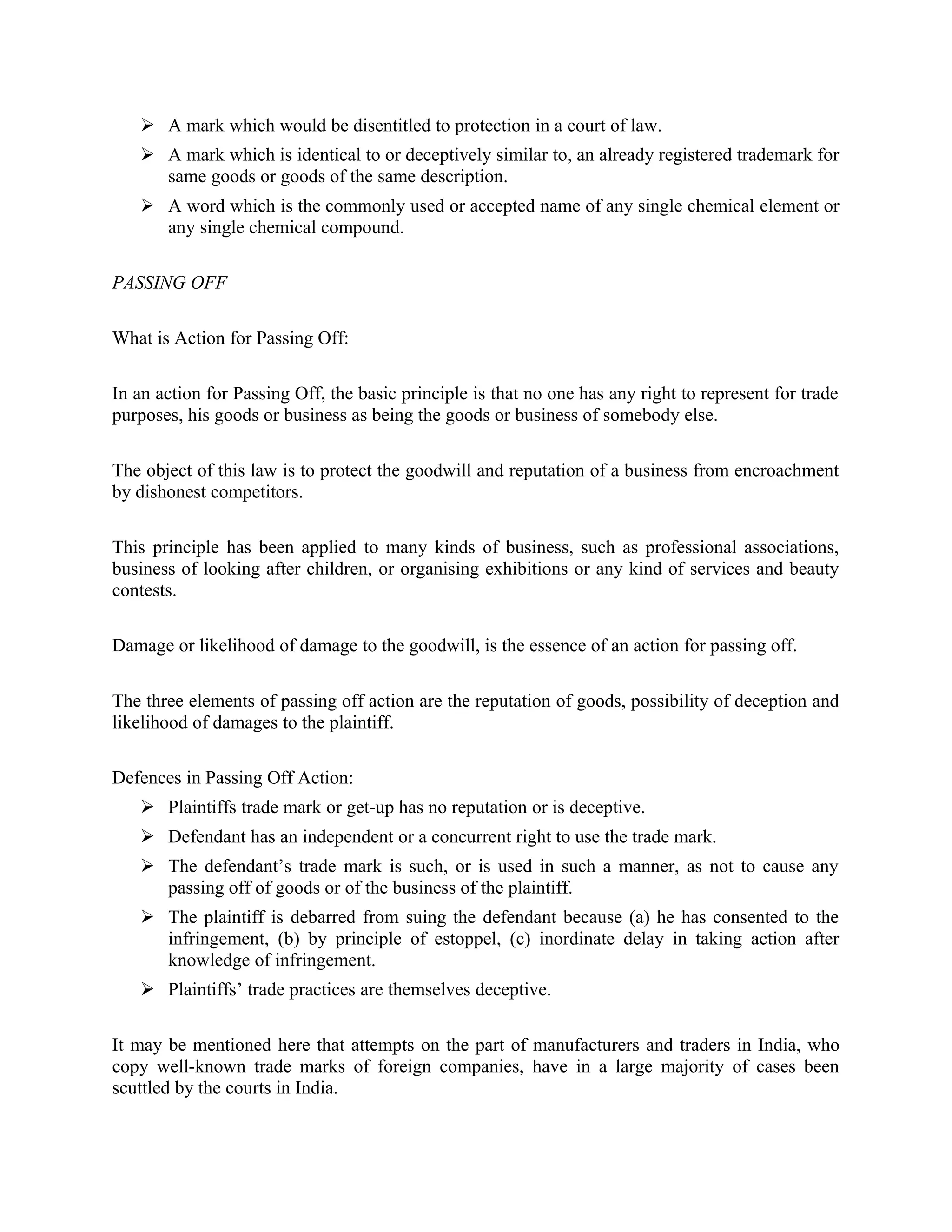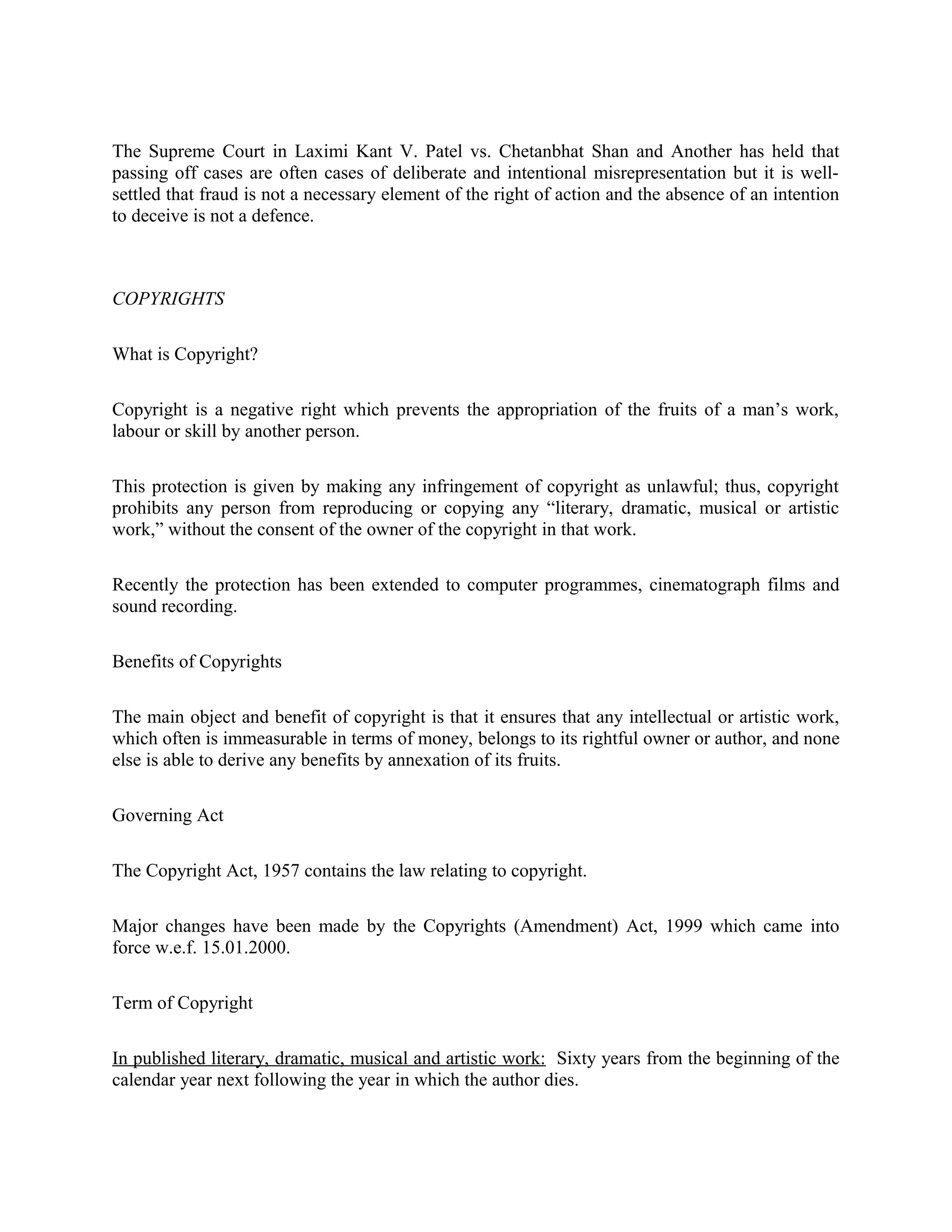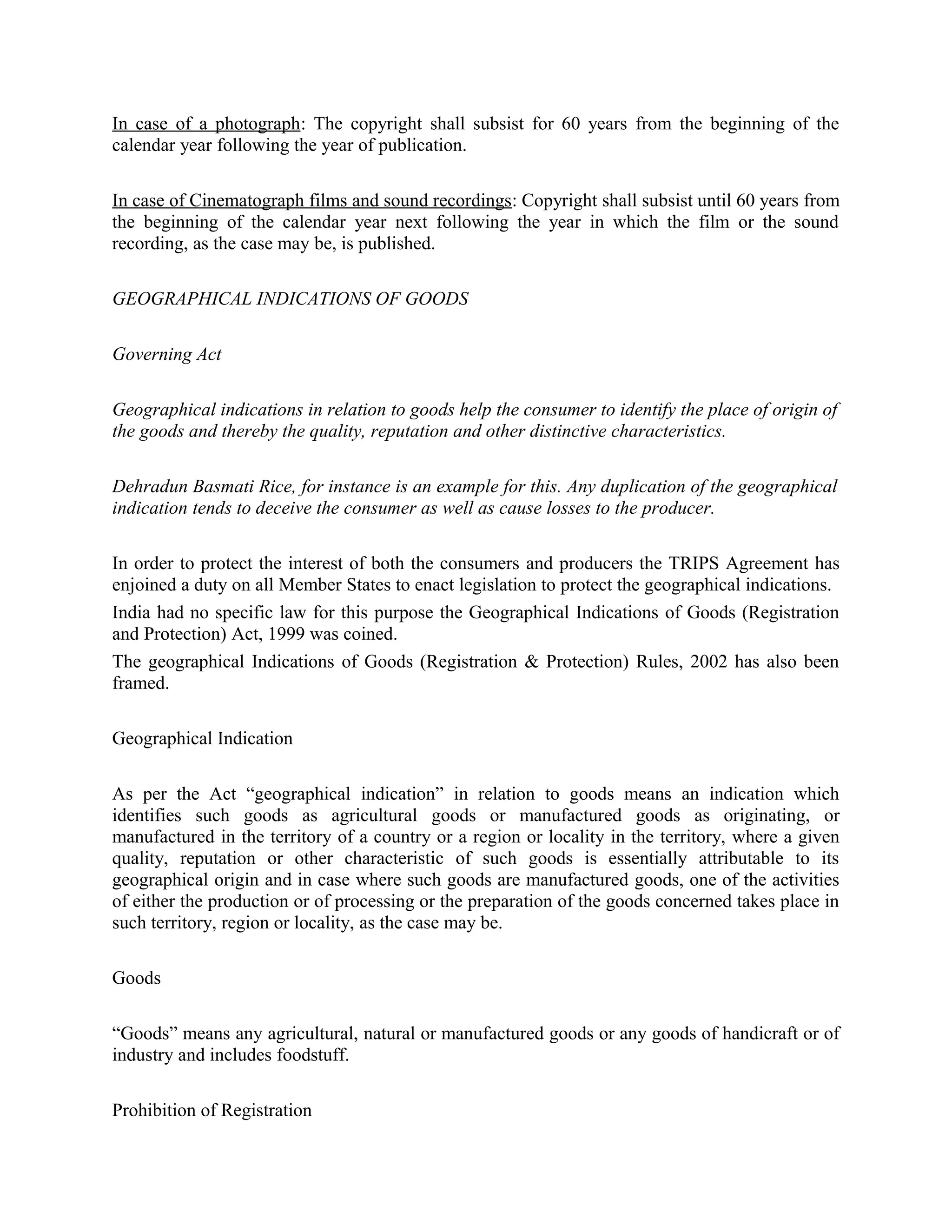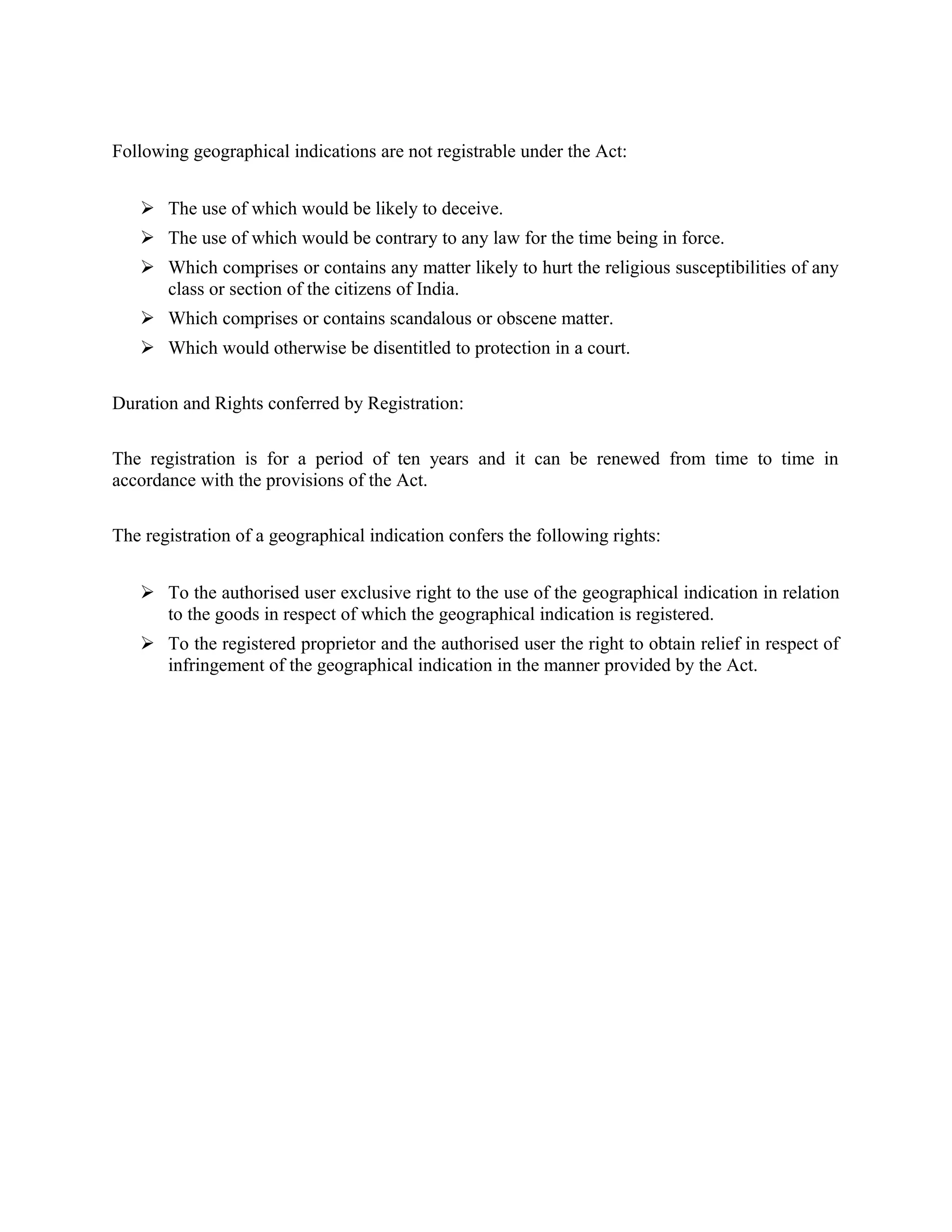Intellectual property refers to creations of the mind such as inventions, literary works, symbols, and designs. Intellectual property rights protect these creations and include the rights to reproduce, distribute, license, sell, and exploit them. Unlike physical goods, intellectual creations cannot be contained within regions due to technology enabling free flow of information globally. Intellectual property rights are private rights that laws confer as monopolies to stimulate innovation and creativity by granting rights holders exclusive commercial benefits for their creations. Major sources of intellectual property rights are international conventions and treaties that have created a complex system of standards for national intellectual property laws.
